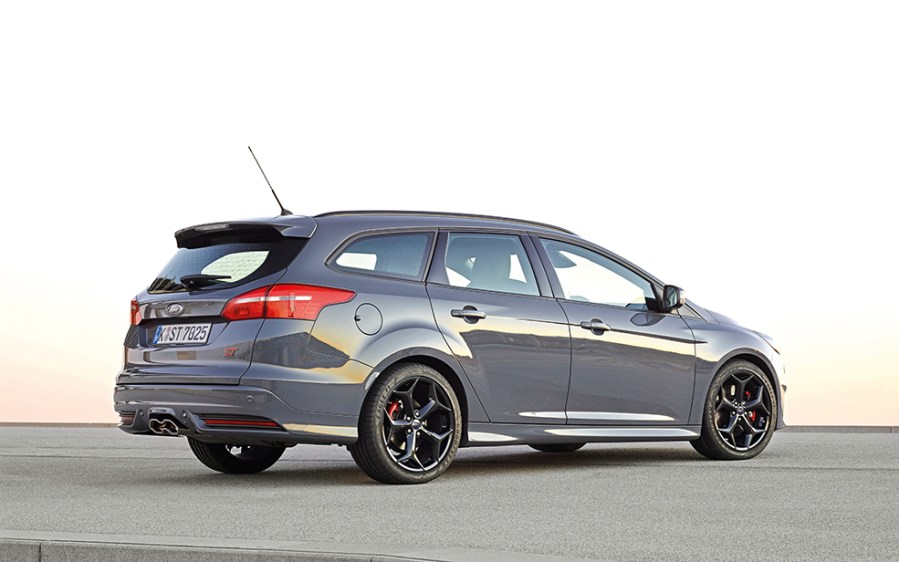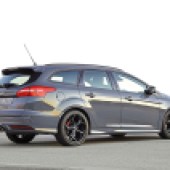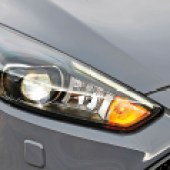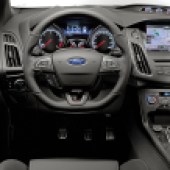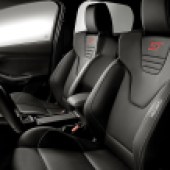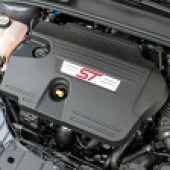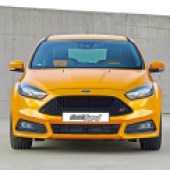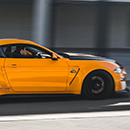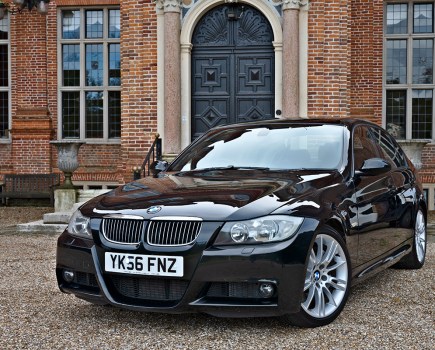Drinking from the dirty pump doesn’t need to be dull – the Ford Focus ST Diesel Mk3 proves fast Fords can also be frugal, here’s our guide to buying one.
Guide from Fast Ford magazine. Words: Dan Williamson.
Why you want a Ford Focus ST Diesel Mk3…
■ Focus ST Mk3 is an astonishingly good all-rounder, making your everyday journeys comfy, quick and extremely enjoyable – and it’s even available as an estate.
■ There’s massive torque, and a remap takes an ST TDCi to at least 210bhp for almost ST250 levels of performance.
■ It’s so cheap to run. There is simply a no more practical fast Ford than a sub-£10k TDCi averaging 55mpg and costing pennies to tax.
Why you don’t…
■ It’s an oil-burner, and there’s nothing cool about fuel economy, low emissions or cheap road tax.
■ Unless you’re covering above-average mileage, a derv makes no more sense than a petrol Focus, and diesels need long runs to keep their DPFs clear.
■ You’ll tell yourself you won’t, but every time you hear the diesel clatter and feel the revs run out, you’ll wish you’d bought the petrol-powered ST instead.
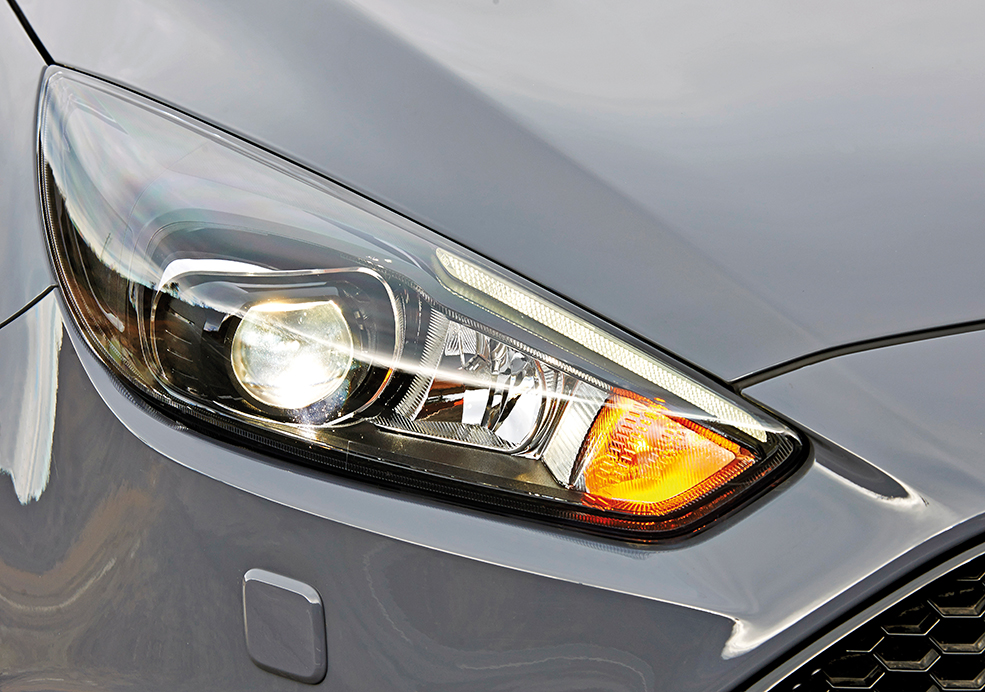
What to look out for on a Ford Focus ST Diesel Mk3
Identity
Nobody fakes a diesel-powered ST, but you’ll need to ensure you’re getting the spec you want. The ST-3’s leather Recaros are occasionally transferred to lesser models, so remember all ST-3s came with xenon headlamps, cruise control and rear parking sensors.
Most importantly, double-check the car you’re buying really belongs to the seller, isn’t the subject of outstanding finance, and hasn’t been written-off. Pay for a comprehensive history check with guarantee (not just a cheap phone app).
Compare the chassis number on the V5 logbook with the VIN printed on the car: you’ll see it on a sticker at the bottom of the driver’s-side B-pillar and on a tag at the left-hand-side of the dashboard (visible through the windscreen).
Lots of Focus STs have been accident-damaged, so look for poor panel gaps, creases or splits in the boot, floor or inner wings, overspray on the trim or mismatched paintwork.
Keep an eye out for cheap base-model STs, which have been used by police forces and have led hard lives. They’re considerably cheaper than regular versions.
Finally, don’t forget key-free STs are a huge target for thieves, so invest in additional security – such as a tracker, steering-wheel lock, and Faraday pouch for the key to stop it from being cloned – and make sure your ST is fully insured.
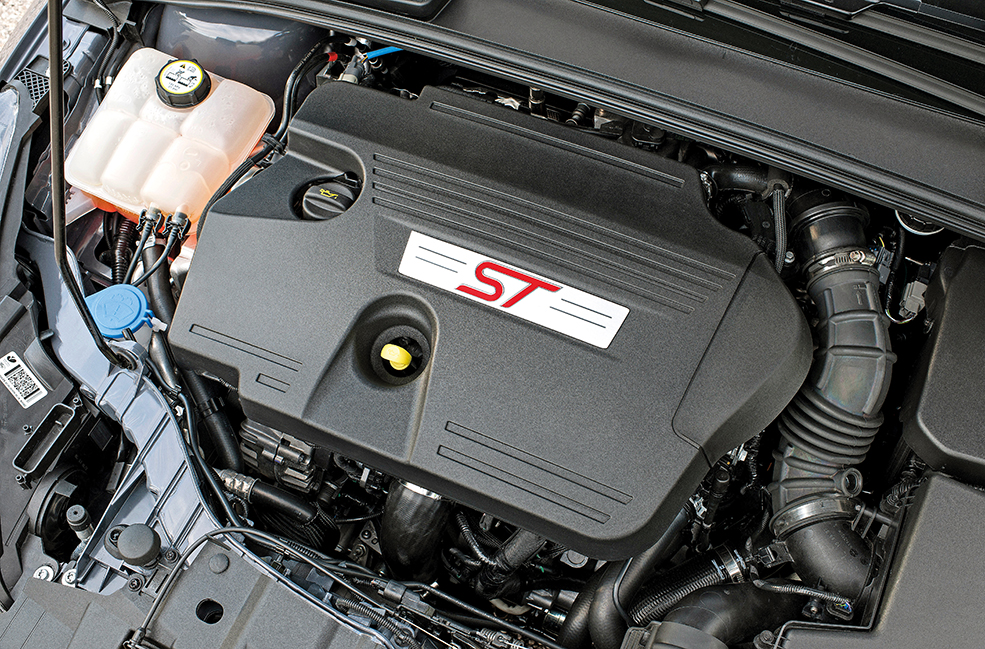
Engine & Transmission
French cars may be famed for unreliability, but they’re often redeemed by unburstable diesel engines – and Ford’s Peugeot (PSA) DW-based Duratorq is no exception.
The 185PS (182bhp) ST engine is a development of the 2.0-litre found in lesser models (using unique calibration, new intake system and sports exhaust), so service intervals are the same as any regular Focus – every 12 months or 12,500 miles, with the cambelt and auxiliary drive belts at 125,000 miles or ten years. Your local dealer or trusted mechanic should be capable, or use a Ford specialist such as Collins Performance to ensure the job’s done right.
Stick to Ford’s recommended 0W30, but expect to be covered in it during an oil change: it’s a plastic sump (susceptible to damage) and undoing the plug is always messy – so don’t be surprised to see signs of old oil around the bottom of the engine and under-trays.
No major engine problems are common, but beware of cheaply tuned examples; too much boost can exceed the fuel pump’s abilities, and we wouldn’t go beyond the 210bhp remap recommended by Collins. Although an induction kit is tempting, some types can cause serious running issues, and a new paper filter is good enough for making decent power.
Beware of a TDCi with a DPF delete – watch out for a straight-through or gutted-and-welded-up pipe. It’s unlikely to smoke; in fact, it will probably run better and not even throw on an engine management light, but you really don’t want to get caught by DVSA. If you must have one, get a dummy DPF, which looks the same to an MOT tester, and invest in a specific DPF-delete remap from a reputable tuner – as opposed to a poor map that instead zeroes all of the values.
Similarly, EGR deletion isn’t recommended, although it’s an option for owners when the valve starts sticking; make sure the engine management light isn’t staying on.
Remember, for the health of the DPF, don’t do too many short journeys, and regularly give the car a good thrashing. There’s no alternative.
Stop-start was standard, and the battery is very expensive, at about £400. On an early ST, it may be due for replacement, so beware.
Two types of transmission were offered: the trusted MMT6 six-speed manual or, from 2016, a Getrag Ford PowerShift six-speed dual-clutch automatic. If you’re a keen driver, you’ll want the manual. It’s tough and highly unlikely to cause trouble. Even the clutch should laugh at the grunt of a tuned diesel.
Still, check for slip and listen for vibrations. The dual-mass flywheel can start to suffer if the torque has been increased too much (we’re talking 400lb.ft-plus), and we expect to see more problems in later years.
Like the petrol ST, a quick-shift feels much better, but a boost hose on the TDCi gets in the way of some setups, making it tricky to select gears, especially reverse.
If you do loads of miles, you might prefer the auto – plus it’s quicker to 60mph than the manual. You can use it as fully automatic or select gears with paddles on the steering wheel. There’s also a Sport mode, which changes up at higher revs and downshifts under braking. It’s no DSG, but it suits the diesel well.
PowerShift has a poor reputation for reliability, albeit in smaller-engined Fords with a DCT250 and dry-clutch system. The ST has a DCT450 and wet-clutch setup, which is more reliable but needs oil changes every three years or 37,500 miles. Even so, ensure there are no warning lights on the dashboard, no clutch slip, stalling or nasty noises.
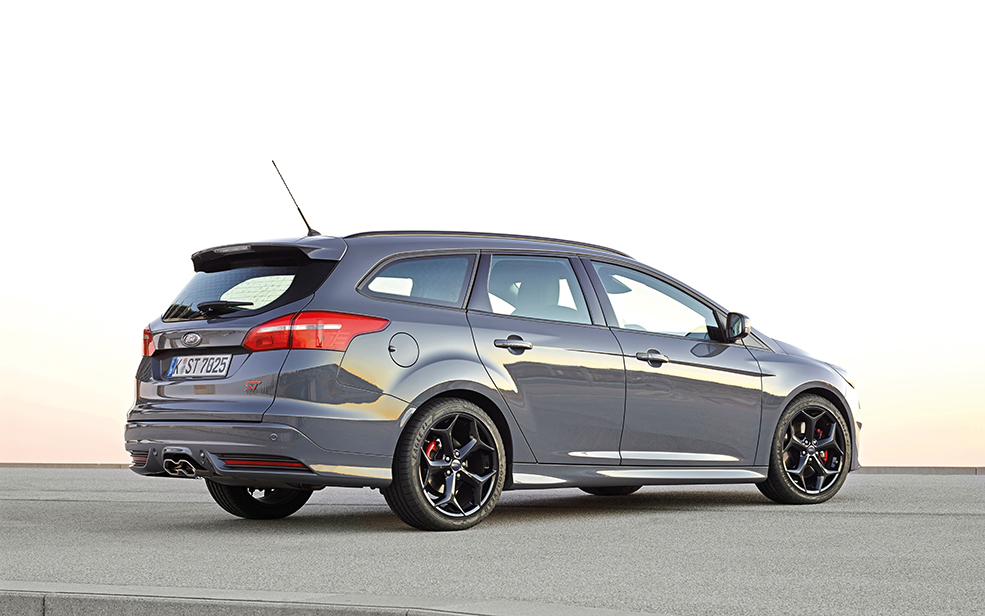
Chassis
Unlike previous sporty Ford diesels, the Ford Focus ST Diesel has the full ST suspension and braking package, here only in facelifted (Mk3.5)form with uprated dampers, bushes and front springs, stiffer frontal structure, and tuned steering.
It’s very good, although torque steer is still a problem. Consider it a bonus if the previous owner has fitted polyurethane bushes to the front wishbones, along with an uprated engine mount. Likewise, don’t be afraid of lowering springs and 15/20mm wheel spacers, which look great and have few negative effects, other than slightly harsher ride.
The suspension should feel taut, even on a high-mileage ST; if not, there’s a problem – such as snapped springs or worn bushes. Rear trailing arm bushes are starting to show wear on some cars, and they’re tricky to replace.
Standard wheels on the ST were 8x18in, although most were fitted with optional Style Pack or Black Style Pack, both of which added 8x19in alloys. The ride quality is reduced, but looks are much enhanced. Stock rubber was by Goodyear, although many owners prefer Michelin Pilot Sports.
Diesel STs shared the ST250’s braking setup, with 320mm front discs and 271mm rears. They’re good, but won’t take loads of punishment. Check for judder from warped/contaminated discs/pads, which you’ll feel through the pedal under braking.
An RS 350mm front upgrade is relatively low-priced, and offers massive improvements.
Check the braking system for corrosion. Brake lines may be rusty, and callipers could be starting to stick. Pad retaining springs are often seized into the callipers, needing to be drilled out – especially on (Style Pack) red callipers.
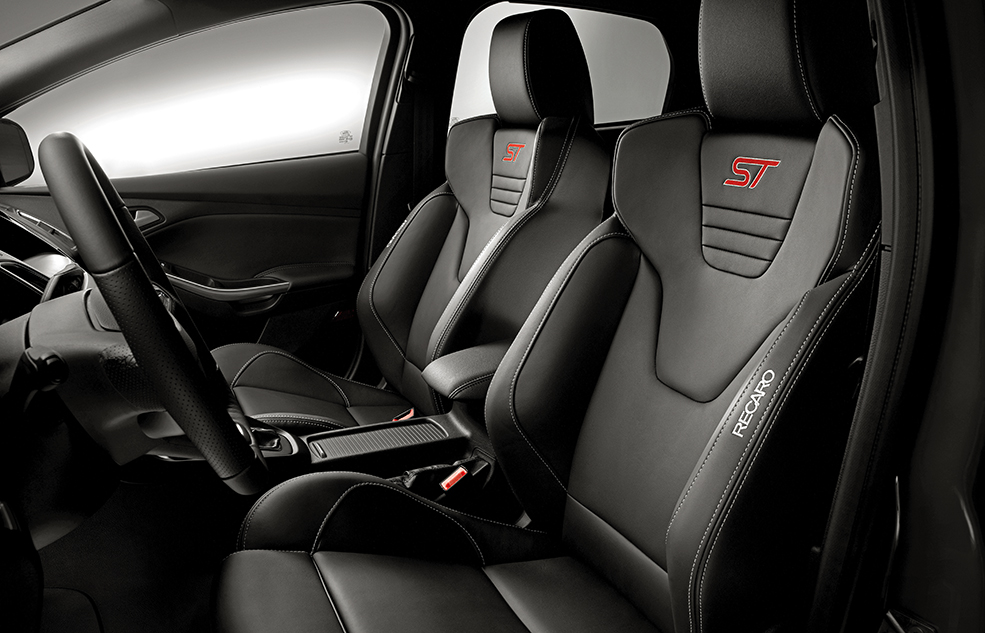
Interior
People moan about Fords lacking ‘premium-quality’ cabins, but in reality, most German cars have a superficial sheen, and they’re all as likely to break. In the ST’s case, that’s not very, although on a well-used example it’s fair to expect bits of plastic trim to rattle.
That said, the cabin copes well with wear, and even a 100,000-mile machine shouldn’t be showing any tiredness. If it does, it’s been abused.
Be sure you’re buying the right spec, as advertised. ST-1s were slow sellers, often discounted from new and discontinued in 2017. They had plain Recaro seats and basic air conditioning, and should be priced accordingly.
ST-2 added coloured panels on cloth seats, climate control, auto-dimming rear-view mirror, 8in touch-screen SYNC3 (inbuilt sat nav optional/standard from February 2017), rain-sensitive wipers, automatic headlights and heated windscreen. On top, the ST-3 gained black leather upholstery, Recaro rear seat, keyless entry, power-foldable mirrors, cruise control and rear parking sensors.
ST-3 and Style Pack featured illuminated scuff plates on the inner sills, which are prone to failure and stupidly overpriced to replace; be cautious if they’re also blowing fuses. Optional heated steering wheel is reckoned to be well worth seeking out, but don’t pay over the odds for a reversing camera or Driver Assistance Pack.
Check all the gadgets work. Auxiliary gauges are known to fluctuate, and the dual-zone climate control can be temperamental. If the power start button is playing up, it could accompany other dashboard warning lamps, and even a battery drain.
If you’re on the heavy side, test the ST-3’s leather Recaros before buying, because they may be too snug. A hefty driver will wear the bolsters, so check they’re not frayed and that the seat isn’t squeaking. Creaking could be coming from the windscreen, especially under hard cornering; if the ‘screen has been replaced, check the carpets for damp.
Examine the service history to ensure the September 2017 recall has been carried out for ineffective side- and knee-airbags.
Don’t be surprised if the inside of the boot feels damp. Water leaks in through tailgate seals, lamp clusters or air vents behind the back bumper. The usual cure is removal of the lights and bumper and sealing the culprit with silicone.
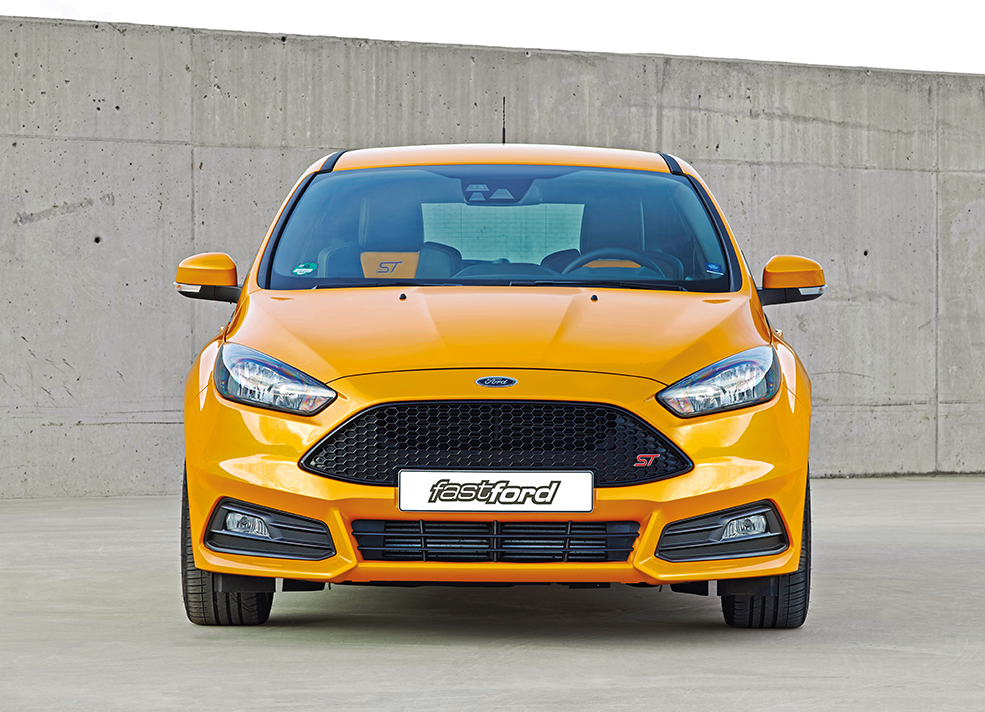
Body
Rust shouldn’t be a problem on cars this age, but it’s a Ford – so check the rear wheelarches. Hatchbacks and estates are both prone to corrosion where the rear bumper rubs against the metal of the arches, and Ford won’t cover it under warranty. Some hatchbacks also exhibit paint wearing thin around the back lights.
If you can’t decide between hatch or estate, bear in mind tuners choose the lighter hatchback, but the estate (pay around £1k extra) has a much larger boot, and handling deficits, if any, are negligible. The hatch was available with desirable electric sunroof, but the wagon was not.
Look out for door edge protectors – a fantastic option, and pricey to retrofit. But they occasionally fall off or get stuck, and have been known to damage paintwork. Door seals around the bottoms are extremely prone to peeling off, but can easily be re-glued.
Headlamps may be misted up or filled with condensation, and flickering DRLs (daytime running lights) are common, generally solved by a software reflash. Xenons are desirable, but beware the adaptive headlights can stop working and are horrifically expensive to replace. Check there’s no ‘headlamp service’ warning on the dash, and make sure they point in a straight line unless cornering; broken units tend to do a better job of spotting pedestrians on the pavement than oncoming vehicles. Check the seller hasn’t set the lamps to manual to hide a fault.
It’s also wise to ensure the headlamp levelling sensor’s plastic arm (within the offside front wheelarch) isn’t broken, which costs around £300 to fix.
Check the paintwork for signs of recent repairs, but don’t be surprised to see lacquer peel on metallic-painted plastic bumpers, which is very common.
Ford Focus ST Diesel Mk3 insurance quote
Car: Ford Focus ST Diesel TDCI
Value: £12,000
Driver and info: 28-year-old male, with a full NCB, living in the TN14 post code, with a clean license. The car is parked on the drive each night and has light modifications including wheels, suspension, exhaust and air filter.
Quote: £325 including insurance premium tax / £300 excess / Comprehensive cover. Adrian Flux.
Tech Spec: Ford Focus ST Diesel Mk3
Engine:
1997cc, four-cylinder, 16-valve Duratorq TDCi, high-pressure common-rail direct injection, BorgWarner variable-geometry turbocharger, Ford management system
Transmission:
Front-wheel drive, MMT6 six-speed manual or Getrag Ford PowerShift six-speed dual-clutch automatic
Suspension:
Front: MacPherson struts, gas-filled dampers, 10mm lowered coil springs, anti-roll bar, revised steering knuckles, uprated bushes; rear: independent control blade multi-link system, revised suspension knuckles, gas-filled dampers, 10mm lowered coil springs, revised 22mm anti-roll bar; electronic stability programme (ESP), torque vectoring control (TVC), recalibrated variable-ratio electronic power-assisted steering with quick rack
Brakes:
Front: 320mm discs; rear: 271mm discs; ABS, optional 335mm front discs
Wheels & tyres:
8x18in alloys with 235/40R18 tyres or optional 8x19in alloys with 235/35×19 tyres on Style Pack/Black Style Pack
Exterior:
Focus Mk3.5 five-door hatchback or five-door estate with ST bodykit including front bumper with fog lights, gloss-black grille, side skirts, rear bumper and rear spoiler, plus black headlight surrounds, black roof rails (estate), auto headlights (ST-2 and ST-3), rain-sensitive windscreen wipers (ST-2 and ST-3), heated windscreen (ST-2 and ST-3), xenon adaptive headlamps (standard on ST-3 or optional on ST-2 City Pack), rear parking sensors (ST-3). Optional rear privacy glass (ST-2 and ST-3), optional glass electric sunroof (ST-2 and ST-3 hatch), optional ST Style Pack adds red brake callipers, rear privacy glass and illuminated scuff plates (ST-2); ST-3 has illuminated scuff plates, red callipers as standard. Available in Frozen White, Race Red, Stealth, Spirit Blue, Deep Impact Blue, Tangerine Scream, Panther Black, Shadow Black or Moondust Silver
Interior:
Recaro front seats in Lux in Charcoal Black cloth (ST-1), Protection in Lux in Smoke Storm/Tangerine Scream/Spirit Blue/Race Red (ST-2) or Windsor leather in Charcoal Black (ST-3), heated and power-adjustable front seats (ST-3), sculpted Recaro rear bench seat (ST-3), ST leather-trimmed steering wheel, ST gearknob, ST pedals, Ford Power Start button, automatic stop-start system, air conditioning (ST-1), climate control (ST-2 and ST-3), keyless entry (ST-3), auto-dimming rear-view mirror (ST-2 and ST-3), Ford DAB audio with SYNC1 (ST-1), SYNC3 with 8in touchscreen (ST-2/ST-3), optional premium sound system, reversing camera, cruise control (standard on ST-3/automatic), heated steering wheel, blind spot information system (BLIS), Active City Stop and Driver Assistance Pack

